Aged Pu-Erh Tea
Romancing the Chinese Yunnan
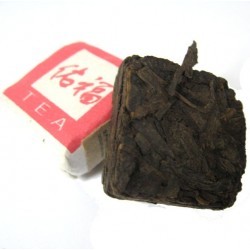


Add Your Review | Read all reviews
An everyday tea brick and another naturally aged raw pu-erh tea cake.
Ever wonder which is the most romantic tea in the world?
You may have something else in mind, but my vote will go to the Pu-erh tea. Whether it is the geography, history or simply the tea processing, it is endlessly fascinating.
Yunnan Province
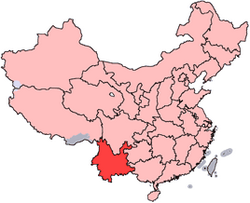 If there is only one place I can visit in China, it would probably be the Yunnan province.
If there is only one place I can visit in China, it would probably be the Yunnan province.
Yunnan means South of Clouds. It is situated at the most Southwestern part of China, bordering Vietnam, Laos and Burma.
Being China's most diverse province, it has 25 out of the 56 ethnic groups in China.
The landscape is diverse, ranging from the mild climate of Kunming (the capital city) to alpine mountains of Shangrila (Zhongdian town) to the traveler oasis of Lijiang (an ancient city with many circulating waterways), where many Westerners decided to make it their home!
And of course, there is the tropical rainforest of Xishuangbanna, where the pu-erh tea plants are cultivated.
Ancient Tea Road
 The earliest cultural exchange between China and the West can be traced back to the Ancient Silk Road, which connected the Chinese capital city of Xian to Istanbul.
The earliest cultural exchange between China and the West can be traced back to the Ancient Silk Road, which connected the Chinese capital city of Xian to Istanbul.
The Chinese traded silk and porcelain in exchange for Mediterranean perfume and precious stones.
While the Silk Road exited via Northwestern China, another trading route existed down South - the Ancient Tea Road.
This trading route connected the tea producing region of Xishuangbanna to Tibet and Eastern China.
In its heyday, it even reached as far as other parts of Himalayas (Bhutan, Nepal and Sikkim) and Southeast Asia (Burma, Vietnam, Laos and Thailand).
The Yunnan merchant traded Pu-erh tea for Tibetan horses and medicinal herbs.
For thousands of years, the merchants and horses left their footprints on this trading route, the reason why it is called the Ancient Road of Tea and Horse.
Post-Oxidized Tea
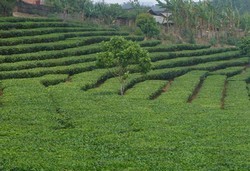 The romance of Pu-erh lies in the passage of time. A raw pu-erh cake can take 5 years to smell ripe, and up to 20 years for the myriads of flavors to emerge.
The romance of Pu-erh lies in the passage of time. A raw pu-erh cake can take 5 years to smell ripe, and up to 20 years for the myriads of flavors to emerge.
Here is the secret why it always gets better with time. The Chinese people spends thousands of years perfecting tea. There are six types of Chinese teas:
-
Green tea
-
White tea
-
Yellow tea
-
Oolong tea
-
Red tea
-
Pu-erh tea
For most teas, oxidation occurs during the making process.
 A traditional pu-erh tea is made with minimal oxidation. This means a raw pu-erh is like a green tea, white tea or yellow tea, depending on how it is made. Post oxidation occurs afterwards.
A traditional pu-erh tea is made with minimal oxidation. This means a raw pu-erh is like a green tea, white tea or yellow tea, depending on how it is made. Post oxidation occurs afterwards.
A raw pu-erh tea can taste astringent and bitter.
After 3 to 5 years, some rawness still remains, mingled with some other smells.
After 5 to 10 years, you can detect ripeness in the dry leaves, which also acquires a tint of red. The tea liquor tastes sweet and mellow.
After 20 years, you can longer detect ripeness in the dry leaves, which now shines with a luster. A rich, powerful aroma emerges from the liquor, carrying fragrances that you would never imagine exist
Related Articles
Green Pu-Erh Versus Aged/Ripe - Which Is More Authentic?
What's the difference between green and aged/ripe pu-erh? Which is more authentic?
Pu-Erh Health Benefits - Which Tea is the Healthiest?
How credible are pu-erh health benefits? How do they compare to green tea's and oolong tea's?
Pu-Erh Weight Loss - Slimming Aid or Scam?
How credible are pu-erh weight loss studies? Which tea is best for losing weight?
Back to Top of Pu-erh Tea
Back to Tea Shop Main Page
Dajixiang (2017) - 350 grams
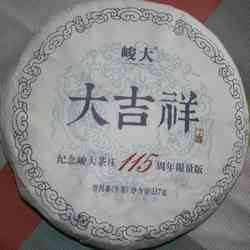 A couple of years ago, we launched two tea cakes: the once-in-a-lifetime treat Yushangming (2006) and white tea Mudan Wang (2014). Both sold out quickly. You can read about the customer feedback here.
A couple of years ago, we launched two tea cakes: the once-in-a-lifetime treat Yushangming (2006) and white tea Mudan Wang (2014). Both sold out quickly. You can read about the customer feedback here.
As a result, some customers are asking for more! So here we are: Junda Dajixiang (2017). A raw tea pur-erh tea cake that holds great promise if you let it mature, but very tasty if you can't wait and must drink it now!
Old Tree, Tender Leaves
When you receive the tea cake, you will see some Chinese words on the original paper wrappings. Wonder what they say? I will explain below.
The tea is commissioned by HQ under his brand: 峻大. The tea cake is a commemorative edition to celebrate the 115th year of his tea shop. It is named Dajixiang (大吉祥)that means Great Auspicious.
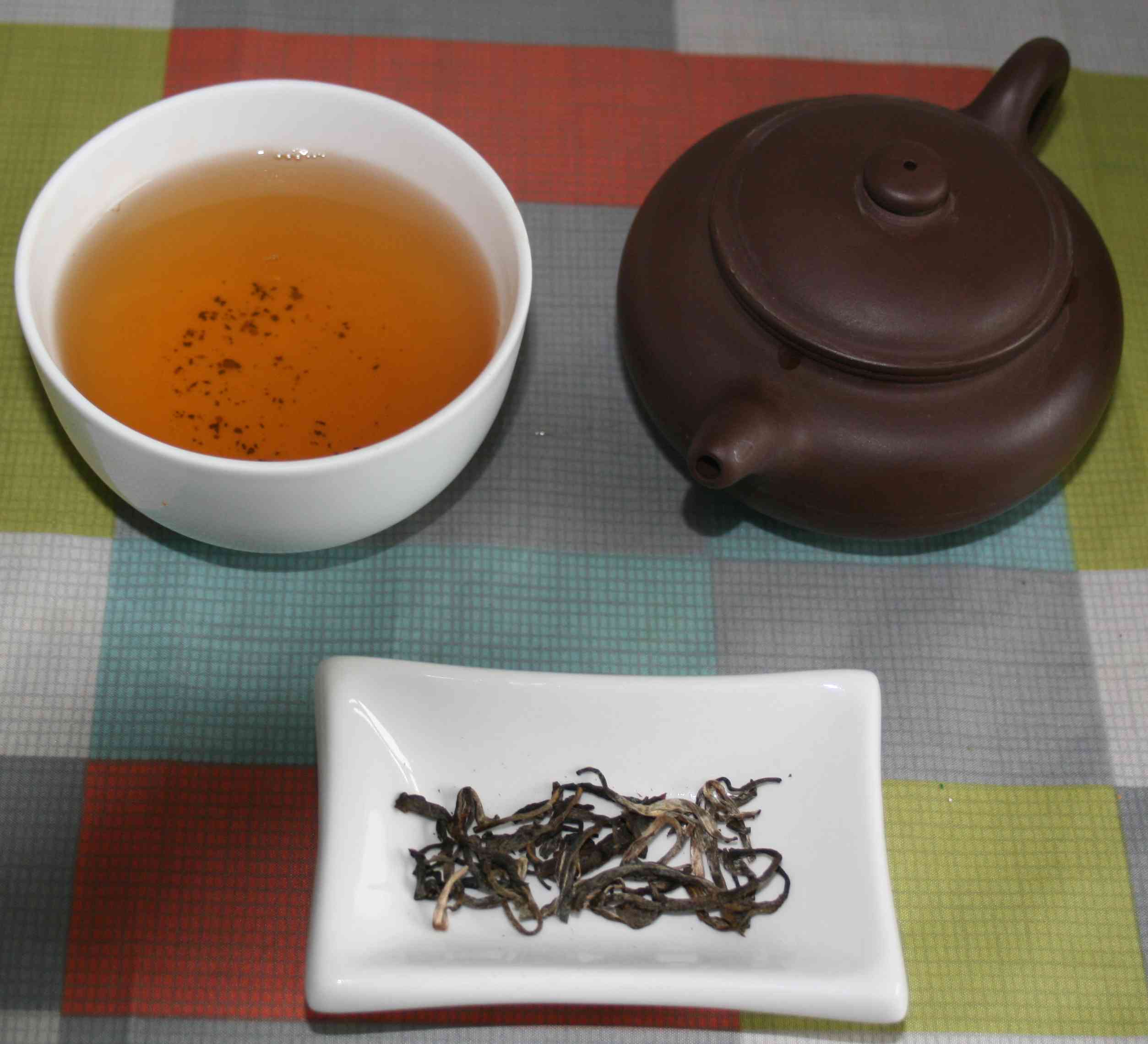 Turning over, we learn more about the origin of this tea.
Turning over, we learn more about the origin of this tea.
It is grown in Menghai County (勐海) in the Six Great Tea Mountain (云南古六山) of Yunnan Province, the original Source of Authentic Pu-erh tea. Tea produced from these Tea Mountains are highly prized as the old tea trees produce leaves with deep, complex flavors with camphor and mint notes when matured over time.
It consists mostly of tea buds with some small leaves, handharvested in 2017 spring from tea trees more than a hundred years old, known in China as Gu Chashu (古茶树).
The tea leaves were sundried (晒青) and compressed into a tea cake by a local tea factory called Yangpinyao (杨聘号).
Brewing Note
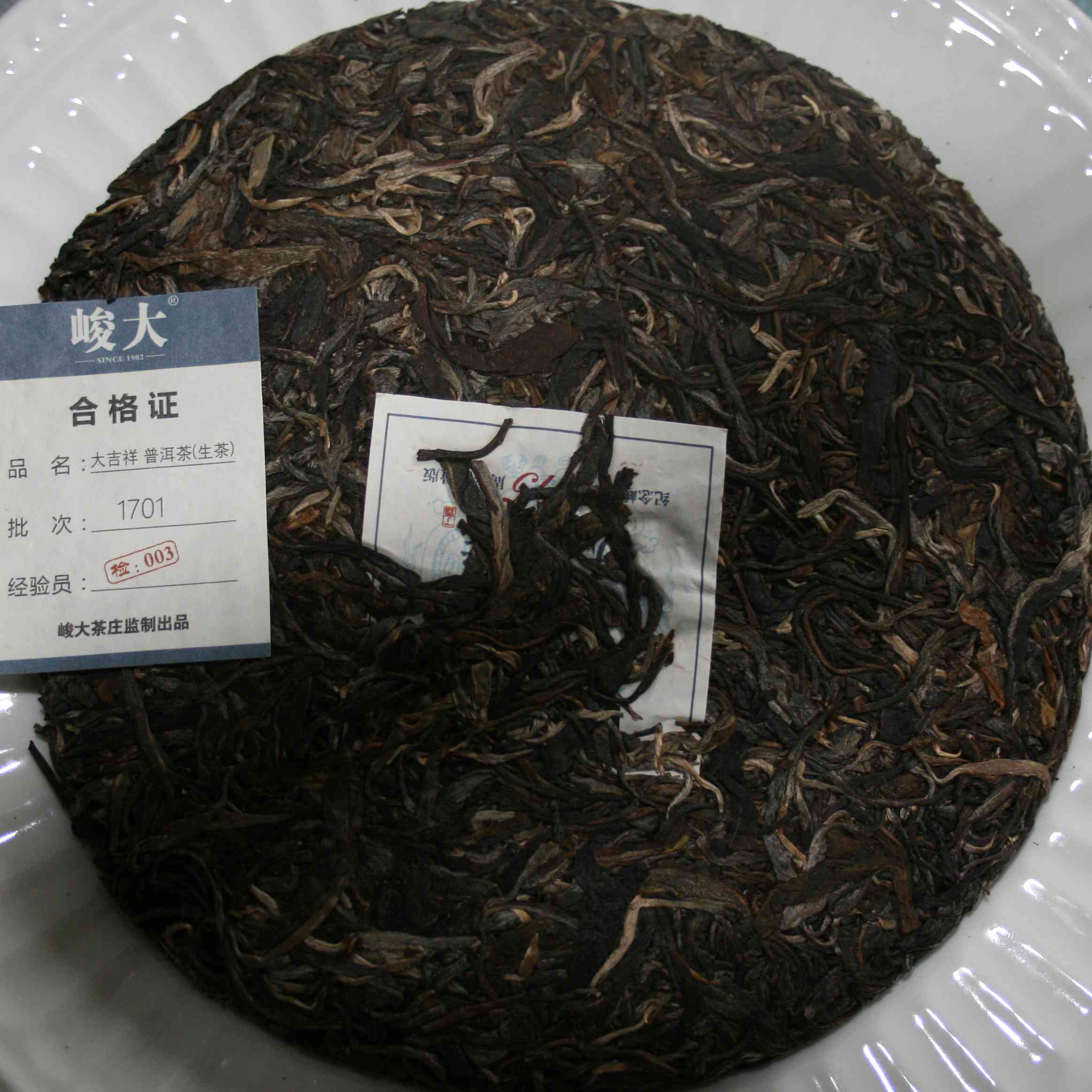 |
| Click To Enlarge |
Given that this is a very reasonably priced tea cake that is barely nine months old, my expectation wasn't too high to start with. However, he beats me to it - this tea is surprisingly drinkable now.
When your parcel arrives, open it and examine the tightly packed tea cake. Notice it smells pleasantly fresh.
Peel (not break) off a few pieces and brew at near boiling point in a yixing or porcelain vessel. Let them settle down.
Make a concentrated brew. The liquor is a golden orange, quite unlike the dark red (or black) of an artificially ripened pu-erh.
Now take a few sips. The body is strong and pleasant with hints of wood. There is no astringency and bitterness.
When you finish, look at the wet leaves. The wet leaves look good - they are tippy buds with some small leaves. Hardly any large leaves and no stems.
As it fully mature over the next 7-8 years, the dried tea cake and liquor will turn darker and acquire more fragrance. The taste will become sweeter, richer, more rounded and harmonious.
Shunji Pu-erh (2000) - 50 grams
This ripe pu-erh has an earthly flavors. Its sweet, mellow taste and low prices make it an excellent everyday tea.
The first time I tried this ripe pu-erh tea I was absolutely astounded. A 17-year pu-erh tea for just $8? Wow, incredible value!
Sweet, mellow and smooth, there is no unpleasant tastes and smells commonly associated with pu-erhs. Earthly and gentle, it seems a refreshing change from my staple diet of green tea!
The low price is because it is a ripe pu-erh. The raw tea leaves have been partially oxidized using the wet-piling technique before leaving factory.
This is a quality tea that offers great value for money. If you are new to Pu-erh or are looking for an everyday tea, it is worth trying out.
Brick Tea
To give you some background, there are two types of pu-erh tea: loose-leaf and compressed.
When making compressed tea, the tea leaves are steamed and pressed into cakes (most common), bricks or bowl (called tuocha).
This is a brick tea. The tea leaves come packaged into 5-7 grams cubes.
 It is an ideal backup tea. It keeps forever. You will never run out of tea!
It is an ideal backup tea. It keeps forever. You will never run out of tea!
Ripe Pu-erh
While a raw pu-erh can take 5 years to smell ripe and 20 years to fully mature, this process can be shortened to 4 weeks using the wet-piling technique.
Tea leaves are piled up to a height of one meter. Water or mists are sprayed on the leaves. The wet conditions cause bacterial and fungal to multiply. They produce heat and enzymes, which in turn oxidizes the leaves.
If you are new to pu-erh, this is a good way to get into pu-erh. The main advantage of a ripe pu-erh is price. A high quality ripe pu-erh can seem a win-win!
Back to Top of Pu-erh Tea
Back to Tea Shop Main Page


Click Read all reviews for all customers reviews relating to this product and Google Reviews for recent customer feedback on this tea shop.
The five most detailed customer reviews relating to this product are shown below.Reviews:


By Christian (Murwillumbah)
The green tea is such a good taste with minimal bitterness which I find hard to come buy, especially for the price you sell it for.
Just had my first sample of the pu-erh tea blocks you sent me and found it very smooth , sweet and earthy, completely different to any other tea i have tried. My friend J*** who is a tea enthusiast put me on to your site as he swears by the quality of your products and i am now another happy customer who will spread the good word. The free international shipping that you offer at times is amazing too.
I have never tasted Pu-erh tea before this so i have nothing to compare it too, although purely as a new experience and based on its subtle after tastes I would rate it a 4 out of 5, also I shared it with many other people (tea lovers and those that never drink tea) who all loved the smooth after taste.


By Megan (Harare)
Tea arrived last Monday :)
So great that you will ship to Zimbabwe (not everyone does).
Am really enjoying having GOOD tea! I had kind of got used to more one-dimensional tea, so it has been delightful sipping my way through more complex, subtle flavours. I'll definitely be back! I have such good memories of quality Long Jing tea living in Hangzhou, but had given up looking for something that good.
I'm not very good at rating things numerically though - compared to all teas available, both teas would get a 5 for sure; if I'm comparing to the best teas I've ever tasted of each variety 3-4 maybe.


By James (Niagara Falls)
The cake is very nice indeed. While I love the ripe pu-erh you offer, the raw cake is better. This raw cake has what the ripe pu-erh has but more. It's has a more rustic, slightly smoked, earthy aroma that is just wonderful. It tastes more dimensional than the ripened tea and is really grounding. I feel more connected to everything after drinking this tea. It's just an amazing experience. Lastly, it seems to have less of the "animal farm" smell/taste than the ripened pu-erh has that many people find off-putting. That never bothered me as I truly love both of your pu-erh offerings.


By James (Niagara Fall)
This is my 2nd review.
I have upgraded this from 4 to 5 stars after drinking it more regularly. If you like teas with a bit more of a flavor punch, than this is for you. I love it in its unadultered state but adding cocoa powder makes for a very tasty "chocolate" beverage. I would never add cocoa powder to any other tea but it works great with Pu-Erhs. I honestly cannot believe there are not more than 3 or 4 posts on this tea. Maybe people are intimidated by this tea because it comes in a compressed form.


By Vince (Singapore)
The taste is typical of the Puer that one will get from Singapore restaurants, neutral with very little or no hint of the musky smell. Very smooth and good for everyday drinking. The colour is a dark red. The cube size makes it a good travelling companion for easy storage. This tea will be a good introduction to beginners to cook Puer.
I will rate the puerh at 3.5 overall with a 4.5 for value for money.

